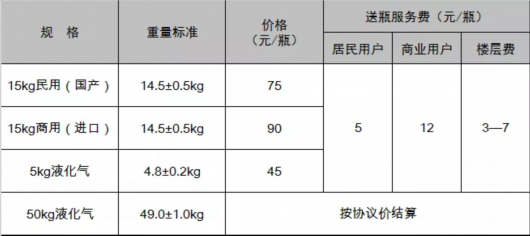match option { Some(_) => println!("yes"), None => println!("no")}matchд№ҹжҳҜиЎЁиҫҫејҸпјҡ
let option: Option<u8> = Some(1);let surely = match option { Some(i) => i, None => 0}println!("{surely}");дҪ еҸҜд»ҘзңӢзңӢOptionзҡ„ж–ҮжЎЈпјҲжҲ–йҖҡиҝҮIDEзҡ„иҮӘеҠЁиЎҘйҪҗпјҢзңӢзңӢйғҪжңүе“ӘдәӣеҸҜд»ҘдҪҝз”Ёзҡ„traitжҲ–ж–№жі•пјү гҖӮ
дҪ д№ҹи®ёжіЁж„ҸеҲ°дәҶпјҢдҪ еҸҜд»ҘдҪҝз”Ё.unwrap_or(val)жқҘд»ЈжӣҝдёҠиҝ°д»Јз ҒпјҲдёҠиҝ°matchзӯүд»·дәҺ.unwrap_or(0)пјү гҖӮ

ж–Үз« жҸ’еӣҫ
Loop
loopеҫӘзҺҜжҳҜжңҖз®ҖеҚ•зҡ„еҫӘзҺҜ гҖӮеҸӘйңҖиҰҒдҪҝз”ЁloopеҚіеҸҜ гҖӮ
loop { if something { break }}иҜҘд»Јз ҒдјҡдёҖзӣҙиҝҗиЎҢпјҢзӣҙеҲ°йҒҮеҲ°breakпјҲжҲ–returnпјҢreturnд№ҹдјҡеҗҢж—¶иҝ”еӣһзҲ¶еҮҪж•°пјү гҖӮ
ж–Үз« жҸ’еӣҫ
for
forеҫӘзҺҜжҳҜжңҖз®ҖеҚ•жҳ“з”Ёзҡ„еҫӘзҺҜ гҖӮе®ғжҜ”дј з»ҹзҡ„forеҫӘзҺҜжӣҙе®№жҳ“дҪҝз”Ё гҖӮ
for i in 1..3 {} // for(let i = 1; i < 3; i++) // i++ is not a thing, see things to notefor i in 1..=3 {} // for(let i = 1; i <= 3; i++)for i in 1..=var {} // for(let i = 1; i <= var; i++)for i in array_or_vec {} // for(let i of array_or_vec) in JS// again, as most other things, uses a trait, here named "iterator"// for some types, you need to call `.iter` or `.into_iter`.// Rust Compiler will usually tell you this.for i in something.iter {}
ж–Үз« жҸ’еӣҫ
while
еҫҲз®ҖеҚ•зҡ„еҫӘзҺҜ гҖӮдёҺе…¶д»–иҜӯиЁҖдёҚеҗҢпјҢRustжІЎжңүdo...whileпјҢеҸӘжңүжңҖеҹәзЎҖзҡ„while гҖӮ
while condition { looped;}иҜӯжі•дёҺifдёҖж ·пјҢеҸӘдёҚиҝҮеҶ…е®№дјҡеҫӘзҺҜжү§иЎҢ гҖӮ
ж–Үз« жҸ’еӣҫ
жү“еҚ°иҫ“еҮә
жү“еҚ°иҫ“еҮәеҸҜд»ҘдҪҝз”Ё print! е’Ң println! гҖӮ
!иЎЁзӨәиҝҷжҳҜдёҖдёӘе®ҸпјҲеҚіеҸҜд»Ҙжү©еұ•жҲҗе…¶д»–д»Јз Ғзҡ„еҝ«жҚ·ж–№ејҸпјүпјҢдҪҶдҪ дёҚйңҖиҰҒиҝҮеӨҡиҖғиҷ‘ гҖӮеҸҰдёҖдёӘеёёз”Ёзҡ„е®ҸжҳҜ vec!пјҢе®ғиғҪеҲ©з”Ёж•°з»„еҲӣе»ә Vec<T> пјҲдҪҝз”Ё [] еҶ…зҡ„еҖјпјү гҖӮ
иҝҷдәӣе®ҸйғҪжңүдёҖдёӘз®ҖеҚ•зҡ„жЁЎжқҝзі»з»ҹ гҖӮ
в—Ҹ иҫ“еҮәдёҖиЎҢдҪҝз”Ё println! гҖӮ
в—Ҹ иҫ“еҮәдёҖдёӘйқҷжҖҒеӯ—з¬ҰдёІдҪҝз”Ё print!("something") гҖӮprintln!дёӯlnзҡ„ж„ҸжҖқжҳҜиЎҢпјҢд№ҹе°ұжҳҜиҜҙе®ғдјҡж·»еҠ жҚўиЎҢз¬ҰеҸ·пјҲnпјү гҖӮconsole.logдјҡй»ҳи®Өж·»еҠ жҚўиЎҢ гҖӮ
в—Ҹ иҰҒиҫ“еҮәдёҖдёӘе®һзҺ°дәҶDisplay traitзҡ„еҖјпјҲз»қеӨ§еӨҡж•°еҹәжң¬зұ»еһӢйғҪе®һзҺ°дәҶпјүпјҢеҸҜд»ҘдҪҝз”Ё print!("{variable}") гҖӮ
в—Ҹ иҰҒиҫ“еҮәдёҖдёӘе®һзҺ°дәҶDebug traitзҡ„еҖјпјҲеҸҜд»Ҙд»ҺDisplay继жүҝпјүпјҢдҪҝз”Ё print!("{variable:?}") гҖӮ
в—Ҹ иҰҒиҫ“еҮәжӣҙеӨҚжқӮзҡ„е®һзҺ°дәҶDisplay traitзҡ„еҶ…е®№пјҢдҪҝз”Ё print!("{}", variable) гҖӮ
в—Ҹ иҰҒиҫ“еҮәжӣҙеӨҚжқӮзҡ„е®һзҺ°дәҶDebug traitзҡ„еҶ…е®№пјҢдҪҝз”Ё print!("{:?}", variable) гҖӮ

ж–Үз« жҸ’еӣҫ
Trait
TraitжҳҜRustдёӯжңҖйҡҫзҗҶи§Јзҡ„жҰӮеҝөд№ӢдёҖпјҢд№ҹжҳҜжңҖејәеӨ§зҡ„жҰӮеҝөд№ӢдёҖ гҖӮ
RustжІЎжңүйҮҮз”ЁеҹәдәҺ继жүҝзҡ„зі»з»ҹпјҲйқўеҗ‘еҜ№иұЎзҡ„继жүҝпјҢжҲ–JavaScriptеҹәдәҺеҺҹеһӢзҡ„继жүҝпјүпјҢиҖҢжҳҜйҮҮз”ЁдәҶйёӯеӯҗзұ»еһӢпјҲеҚіпјҢеҰӮжһңдёҖдёӘдёңиҘҝеғҸйёӯеӯҗдёҖж ·еҸ«пјҢйӮЈд№Ҳе®ғе°ұжҳҜйёӯеӯҗпјү гҖӮ
жҜҸдёӘзұ»еһӢйғҪжңүдё”еҸӘжңүдёҖдёӘ“й»ҳи®Ө”пјҲжҲ–еҢҝеҗҚпјүtraitпјҢеҸӘиғҪеңЁдёҺиҜҘзұ»еһӢеҗҢдёҖдёӘжЁЎеқ—дёӯе®һзҺ° гҖӮйҖҡеёёйғҪжҳҜиҜҘзұ»еһӢзӢ¬жңүзҡ„ж–№жі• гҖӮ
е…¶д»–зҡ„йғҪеҸ«trait гҖӮдҫӢеҰӮпјҡ
trait Duck { fn quack(&self) -> String; /// returns if the duck can jump fn can_jump(&self) -> bool { // default trait implementation. Code cannot have any assumptions about the type of self. false // by default duck cannot jump }}struct Dog; // a struct with empty tupleimpl Dog { // a nameless default trait. fn bark(&self) -> String { String::from("bark!") }}impl Duck for Dog { // implement Duck trait for Dog type (struct) fn quack(&self) -> String { String::from("quark!") } // dog kind of quacks differently}let dog = Dog {};dog.bark;dog.quack;йҰ–е…ҲпјҢжҲ‘们е®ҡд№үдәҶtraitпјҲеңЁйқўеҗ‘еҜ№иұЎиҜӯиЁҖдёӯеҸ«еҒҡжҺҘеҸЈпјҢдҪҶе®ғеҸӘеҢ…еҗ«ж–№жі•жҲ–еҮҪж•°пјү гҖӮ然еҗҺдёәз»ҷе®ҡзҡ„зұ»еһӢпјҲдёҠдҫӢдёӯдёәDogпјүе®һзҺ°trait гҖӮдёҖдәӣtraitеҸҜд»ҘиҮӘеҠЁе®һзҺ° гҖӮеёёи§Ғзҡ„дҫӢеӯҗе°ұжҳҜDisplayе’ҢDebug trait гҖӮиҝҷдәӣtraitиҰҒжұӮпјҢз»“жһ„дёӯдҪҝз”Ёзҡ„зұ»еһӢеҝ…йЎ»иҰҒзӣёеә”ең°е®һзҺ°DisplayжҲ–Debug гҖӮ
#[derive(Display,Debug)]
жҺЁиҚҗйҳ…иҜ»
-
-
-
-
-
-
-
-
-
-
-
-
-
-
-
-
-
-
-
-
- д»ҺдёӯеҢ»и§’еәҰзңӢзҰҸйјҺзҷҪиҢ¶[е…»з”ҹиҢ¶]
- еӨӘйҳіжӯ»дәЎеҗҺдјҡеҸҳжҲҗ еӨӘйҳід»ҺеҮәз”ҹеҲ°жӯ»дәЎзҡ„иҝҮзЁӢ
- е‘Ёжқ°дјҰз»Ҹе…ёжӯҢиҜҚеҲҶдә«
- з”·дәәзҲұеҶ’жұ—жҳҜд»Җд№ҲеҺҹеӣ
- жңҲйЈҹжҜҸе№ҙеҸ‘з”ҹеҮ ж¬Ў жҲ‘еӣҪж—ҘйЈҹжңҲйЈҹи®°еҪ•д»Һе“ӘжңқејҖе§Ӣ
- зҒ«жҳҹзҡ„5еӨ§з§ҳеҜҶ д»ҺзҒ«жҳҹдёҠзңӢең°зҗғеҘҪжҒҗжҖ–
- еҗ„зұ»зЁӢеәҸе‘ҳеӯҰд№ и·Ҝзәҝеӣҫ GetдәҶеҗ—
- ж•°жҚ®еә“дё»д»ҺдёҚдёҖиҮҙпјҢжҖҺд№Ҳи§Јпјҹ
- еҰӮдҪ•жҢ‘йҖүзҫҠеҘ¶?
- ж”ҫдёӢд»ҺжқҜиҢ¶ејҖе§Ӣ,жқҜдёӯзҡ„иҢ¶и¶ҠеҸ‘зҡ„еҮү

















